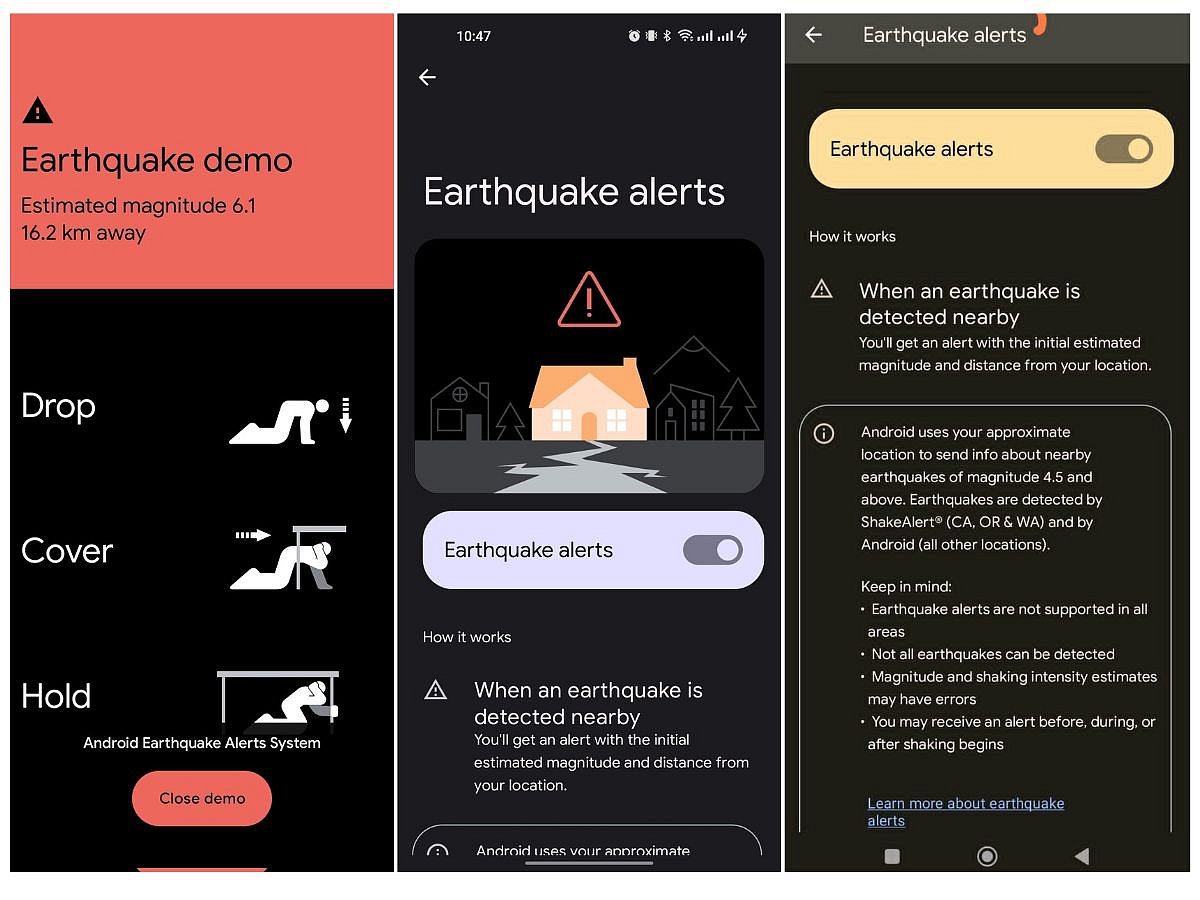Android Earthquake Alerts: Enhancing Global Safety
The Android Earthquake Alerts system represents a significant advancement in disaster preparedness, utilizing the widespread availability of smartphones to enhance public safety. By transforming millions of Android devices into a network of seismometers, this technology aims to provide timely warnings of seismic activity, potentially saving lives in earthquake-prone regions.
How the System Works
Launched in April 2021, the Android Earthquake Alerts system employs the accelerometers found in Android smartphones to detect seismic activity. When a phone senses the initial P-wave, which is the less destructive precursor to the more damaging S-wave, it sends a signal to a central server along with an approximate location. This data is then analyzed in real-time, allowing the system to confirm the earthquake’s occurrence and estimate its location and magnitude.
Types of Alerts
The system generates two types of alerts based on the severity of the detected shaking:
– **BeAware**: This alert is issued for light shaking, encouraging users to remain vigilant. – **TakeAction**: For stronger tremors, this alert overrides the phone’s screen and emits a loud sound to ensure users take immediate protective measures.
To receive these alerts, users must enable both the Android Earthquake Alerts feature and location services, as well as maintain an internet connection. Users have the option to disable alerts in their settings if they choose.
Global Reach and Impact
Since its inception, the Android Earthquake Alerts system has detected over 18,000 earthquakes and is currently operational in 98 countries, reaching approximately 2.5 billion people. This expansion marks a significant increase in access to early warning systems, particularly in areas where traditional seismic networks are limited or non-existent.
The system’s effectiveness was notably demonstrated during the 2023 Turkey-Syria earthquake, where a magnitude 7.8 quake struck a region with underdeveloped seismic infrastructure. Android’s alerts provided crucial seconds of warning, potentially saving lives by enabling residents to take cover before the more destructive shaking occurred.
Continuous Improvement
One of the key challenges faced by the Android Earthquake Alerts system is the accurate real-time estimation of earthquake magnitude. Over the past three years, the system has made significant strides in this area, reducing the median absolute error in magnitude estimation from 0.50 to 0.25. This improvement brings the system’s accuracy in line with, or even surpassing, traditional seismic networks.
User feedback has been overwhelmingly positive, with surveys indicating that 85% of respondents find the alerts “very helpful.” Additionally, 79% of users appreciate receiving warnings even if they do not feel the earthquake, highlighting the system’s value in enhancing public safety.
Comparison with Other Systems
Unlike iOS’s localized earthquake warning implementations, which often require additional infrastructure, Android’s system leverages its extensive market share to provide a more comprehensive global solution. This democratization of disaster preparedness allows for a wider distribution of alerts, making it accessible to individuals in diverse regions.
FAQs
How does the Android Earthquake Alerts system detect earthquakes?
The system uses the accelerometers in Android smartphones to detect the initial P-wave of an earthquake, sending a signal to a central server for analysis.
What types of alerts does the system provide?
The system issues two alerts: “BeAware” for light shaking and “TakeAction” for stronger shaking, which overrides the phone’s screen and emits a loud sound.
How many earthquakes has the system detected since its launch?
Since its launch in April 2021, the Android Earthquake Alerts system has detected over 18,000 earthquakes across 98 countries.
Conclusion
The Android Earthquake Alerts system exemplifies how technology can enhance public safety on a global scale. By utilizing existing smartphone infrastructure, it provides timely warnings that can save lives during seismic events. As the system continues to evolve through user feedback and data analysis, its effectiveness in disaster preparedness is likely to improve, further protecting communities worldwide.
The integration of smartphone technology into disaster response systems represents a paradigm shift in how communities prepare for and respond to natural hazards. By harnessing the collective power of millions of devices, the Android Earthquake Alerts system not only enhances individual safety but also contributes to broader community resilience. This approach aligns with global efforts to improve disaster risk reduction strategies, particularly in regions vulnerable to seismic activity.
As the system continues to expand its reach, ongoing collaborations with local governments and emergency services will be crucial for maximizing its impact. These partnerships can facilitate better public education on how to respond to alerts and encourage users to adopt safety measures. Furthermore, as technology evolves, there may be opportunities to integrate additional data sources, such as weather patterns or geological surveys, to refine the accuracy and responsiveness of the alerts.
The Android Earthquake Alerts system also highlights the importance of public engagement in disaster preparedness. By encouraging users to share their experiences and feedback, the system can adapt to meet the needs of diverse populations. This user-centered approach not only fosters trust in the technology but also empowers individuals to take proactive steps in safeguarding themselves and their communities against the threat of earthquakes.
Also Read:
AI Systems Enhance Early Detection of Dementia and Alzheimer

